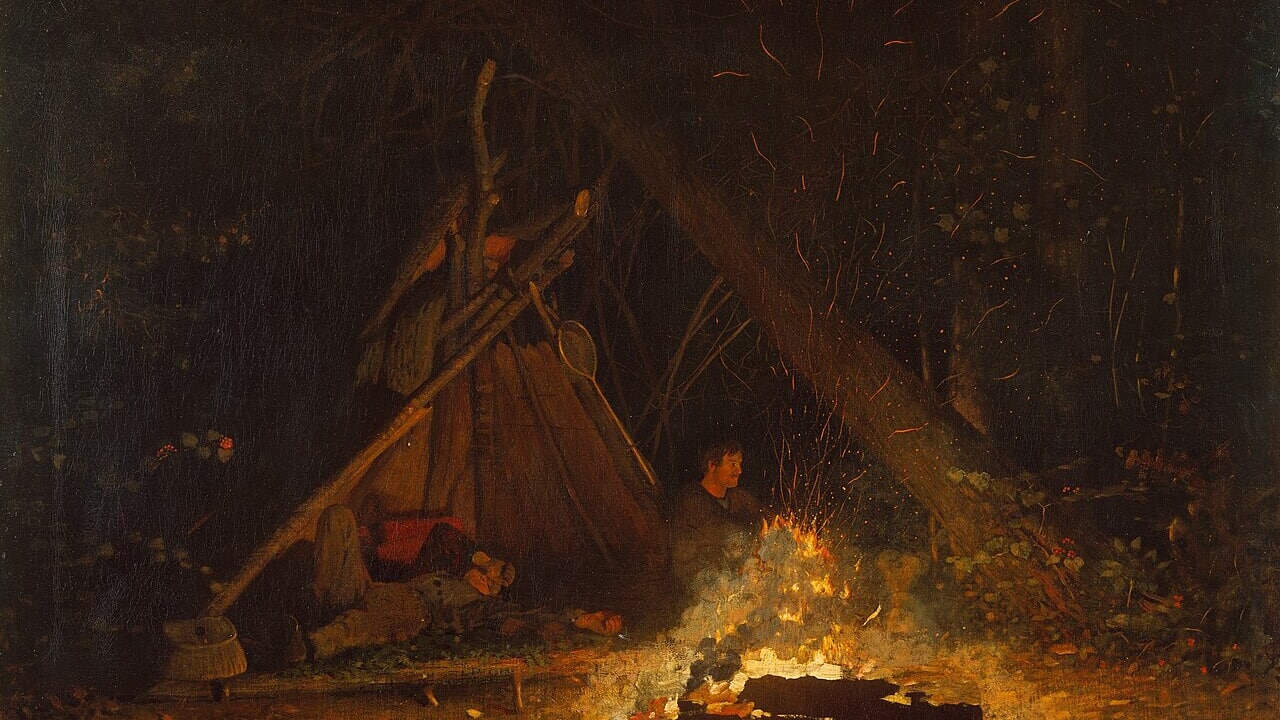Composed in 1906, Charles Ives’ Hallowe’en evokes childhood memories of a growing bonfire and playful mischief. Ives wrote,
It is a take-off of a Halloween party and bonfire – the elfishness of the little boys throwing wood on the fire, etc, etc… it is a joke even Herbert Hoover could get.
Scored for “string quartet, piano and optional drum,” the work begins as a whisper, with only two voices, the second violin and cello, and increases in speed and cacophony. It enters the world of polytonality, with each voice entering into scales in its own distinct key (C major for the first violin, B major for the second violin, D-flat major for the viola, and D major for the cello). Ghostly canons emerge in the counterpoint. The rollicking party ends with dramatic cadential chords which veer away from a C major resolution in a final practical joke.
Ives gives the option of playing the music three or four times, each time with altered tempo. He wrote,
It has been observed by friends that three times around is quite enough, while others stood for four – but as this piece was written for a Hallowe’en party and not for a nice concert, the decision must be made by the players, regardless of the feelings of the audience.
Although the manuscript was dated “first of April,” it is far from a joke. Ives described Hallowe’en as “one of the most carefully worked out [compositions] (technically speaking), and one of the best pieces (from the standpoint of workmanship) that I’ve ever done.”
Hallowe’en is part of a set of Ives’ Three Outdoor Pieces, which includes The Pond and The Gong on the Hook and Ladder.
Recordings
- Ives: Hallowe’en (for string quartet, piano and optional drum), Op. 71, Leonard Bernstein, New York Philharmonic Deutsche Grammophon
Featured Image: “Camp Fire” (1880), Winslow Homer

